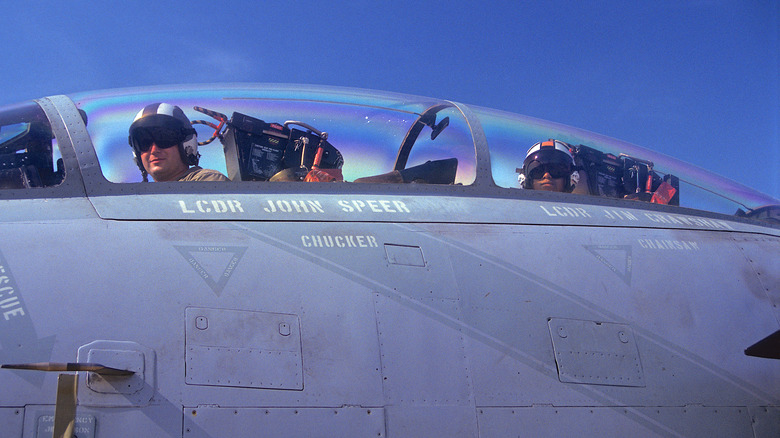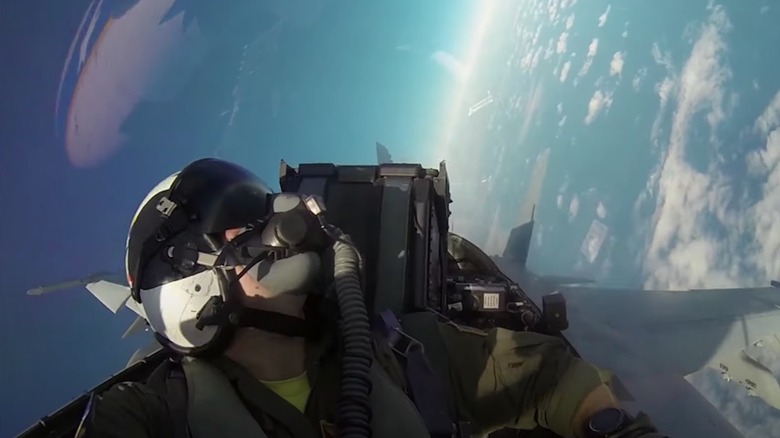Here's Why Fighter Jets Like The F-14 Have A Two-Seat Cockpit
The F-14 fighter jet has been one of the most recognizable aircraft in the U.S. Navy since "Top Gun" hit theaters in May of 1986. Dubbed the "Tomcat," that jet was the fighter of choice for Pete "Maverick" Mitchell and his high-flying friends. Despite its Hollywood profile, there has been a bit of confusion as to why the F-14 and several generations of jets that followed include a two-seat cockpit. And no, it's not because they require two pilots.
As "Top Gun" taught the world, the pilot of the F-14 occupies the front seat of that cockpit. As for the rear-seat occupant, they may not log any throttle time, but their jobs are every bit as vital. In the heyday of the "Tomcat," those backseat flyboys were called Radio Intercept Operators (or RIOs). According to one "Top Gun" aviation consultant, they ran point on navigation, communication, and operating an F-14's weapons systems. During aerial combat, they were even tasked with tracking enemy aircraft a pilot couldn't see.
When "Top Gun: Maverick" flew into theaters with its F-18 Hornets, the role was re-branded as Weapons System Operator (WSO), with the official designation being Naval Flight Officer (NFO). Name change aside, the job hasn't changed much. And as the "Top Gun" sequel detailed, it's about as thrilling a gig as you'll find in the sky that doesn't involve piloting a fighter jet.
Two-seat fighter jets may soon become a thing of the past
There were, of course, a couple of supremely high-tech aircraft currently in the Naval armory absent from "Top Gun: Maverick." And perhaps none were more conspicuously out of sight than the F-35C Lightning II. Developed by Lockheed Martin, the fifth-generation fighter is regarded as one of the crown jewels of the modern Navy's air fleet. Given the Navy's involvement in "Maverick" and its iconic predecessor, it was surprising the plane didn't get at least a little face time in the sequel.
As noted by The Diplomat, Tom Cruise's insistence on piloting jets himself in "Maverick" may have played a role in the F-18 being front and center in the film. That's because the Navy needed to ensure he was not flying their multi-million-dollar planes without backseat backup, and the F-35 is a one-seat aircraft.
The Diplomat also points out that one-seat fighter jets are becoming the norm. Specifically, the article cites that few next-generation fighters offer a two-seat variant. In the case of the F-35, that's partly related to cost, as a second seat — with all the operational bells & whistles — would raise the price of an already exorbitantly expensive jet that hasn't yet proved its mettle in the air. Nonetheless, given the technology being built into modern aircraft, having a second set of eyes and ears on board feels less and less necessary, even if it remains deeply uncertain whether a computer can match a human's level of tactical support.

